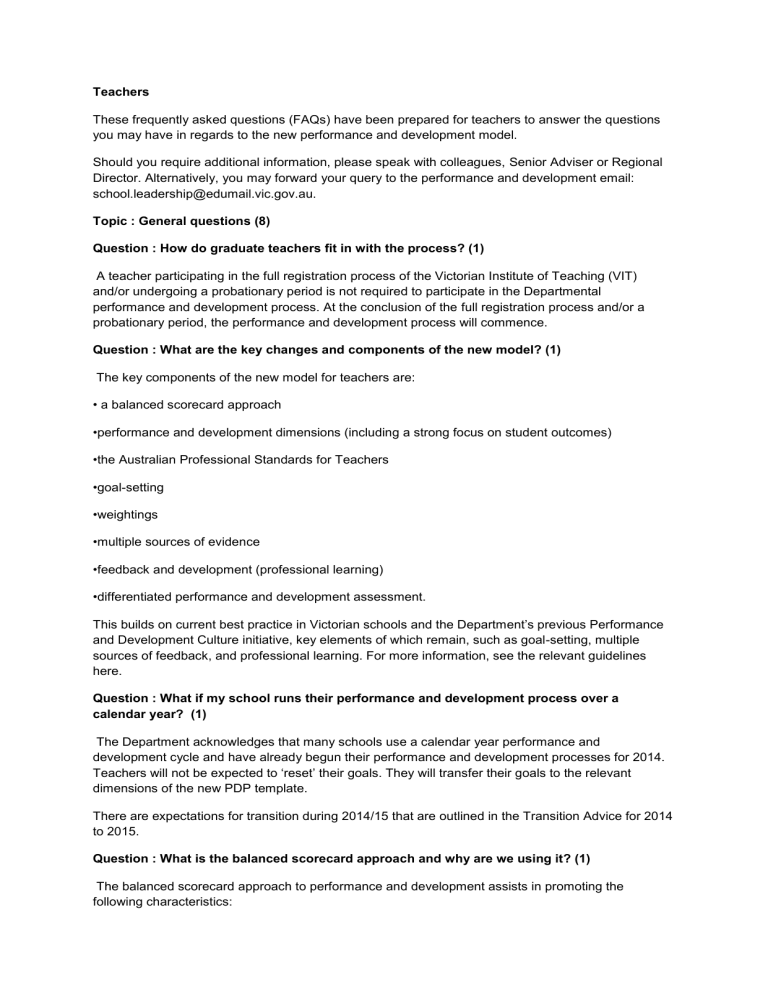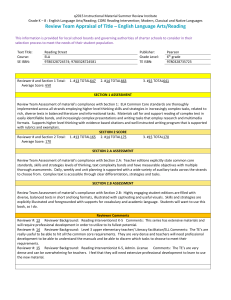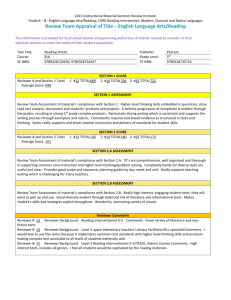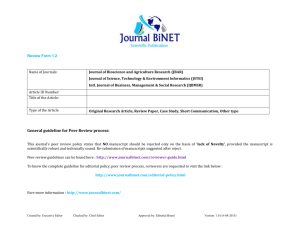DEECD Teacher FAQ PD - Australian Education Union, Victorian

Teachers
These frequently asked questions (FAQs) have been prepared for teachers to answer the questions you may have in regards to the new performance and development model.
Should you require additional information, please speak with colleagues, Senior Adviser or Regional
Director. Alternatively, you may forward your query to the performance and development email: school.leadership@edumail.vic.gov.au.
Topic : General questions (8)
Question : How do graduate teachers fit in with the process? (1)
A teacher participating in the full registration process of the Victorian Institute of Teaching (VIT) and/or undergoing a probationary period is not required to participate in the Departmental performance and development process. At the conclusion of the full registration process and/or a probationary period, the performance and development process will commence.
Question : What are the key changes and components of the new model? (1)
The key components of the new model for teachers are:
• a balanced scorecard approach
•performance and development dimensions (including a strong focus on student outcomes)
•the Australian Professional Standards for Teachers
•goal-setting
•weightings
•multiple sources of evidence
•feedback and development (professional learning)
•differentiated performance and development assessment.
This builds on current best practice in Victorian schools and the Department’s previous Performance and Development Culture initiative, key elements of which remain, such as goal-setting, multiple sources of feedback, and professional learning. For more information, see the relevant guidelines here.
Question : What if my school runs their performance and development process over a calendar year? (1)
The Department acknowledges that many schools use a calendar year performance and development cycle and have already begun their performance and development processes for 2014.
Teachers will not be expected to ‘reset’ their goals. They will transfer their goals to the relevant dimensions of the new PDP template.
There are expectations for transition during 2014/15 that are outlined in the Transition Advice for 2014 to 2015.
Question : What is the balanced scorecard approach and why are we using it? (1)
The balanced scorecard approach to performance and development assists in promoting the following characteristics:
1. Consistency – by implementing a state-wide performance and development process across every
Victorian Government school will provide greater consistency in approach and ensure all teachers have a meaningful plan and receive feedback on their performance.
2. Transparency – by documenting what is considered important in a school and providing the opportunity for open and substantive conversations between staff members and their reviewers about expectations for success and professional development needs.
3. Professional Agency – by empowering staff members to devise their own annual performance and development goals, identify evidence, and identify their own professional development needs, aligned with the strategic goals and priorities of the school and student learning needs. These will be developed in conversation with their reviewer. It empowers schools to develop school-based professional learning with multiple sources of feedback, the use of a portfolio of evidence and flexibility through weightings, with principals having the final decision on performance and development outcomes for principals.
4. Collective efficacy – by aligning to accountability processes through the School Performance
Framework (school strategic plan, annual implementation plan). It promotes the collective responsibility among all staff for the achievement of school goals and priorities and the outcomes of all students.
Question : Who do I speak to if I have any questions or concerns about the performance and development process? (1)
You should contact your school principal or leadership team for support with the performance and development process.
For further information, please visit the Performance and Development website https://edugate.eduweb.vic.gov.au/Services/Schools/SchoolStaffPerformanceDev/Pages/default.aspx.
Question : Why are we doing this? (1)
Research consistently demonstrates that teaching quality is the largest school-based driver of improved student learning outcomes. The new performance and development model aims to build on best practice across the system, recognise excellence and provide support for staff where it is required.
Through sharpening the focus on development, multiple feedback loops and performance and development assessment processes, staff will be better equipped to grow professionally and improve student outcomes. The performance and development model will foster state-wide consistency and transparency to encourage a robust performance and development system.
In order to lift school and student outcomes across the state, we need to set high expectations, provide meaningful, regular feedback on performance, recognise excellence, respond effectively to performance which does not meet expectations and build vibrant professional learning cultures in every Victorian school.
For further information about the Department’s approach to performance and development, please read Professional Practice and Performance for Improved Learning: Performance and Development, available on the Department website.
Question : Why are we using weightings? (1)
The weighting system is designed to enable principals and teachers to place the greatest emphasis on areas they see as most impor tant to achieving their school’s strategic priorities and meeting the learning needs of students. Weightings can be used to articulate where a staff member, team or school should focus their efforts based on school priorities and/or individual areas for development.
There is flexibility to determine the weightings for each of the dimensions, based on individual goals, student learning needs and the local school context at the beginning of the cycle. Weightings should reflect the extent to which that dimension is a priority for the member of staff, team or school.
A minimum weighting of 20% is required for the student outcomes dimension.
Question : Why is the Student Outcomes dimension included (1)
Inclusion of the student outcomes dimension in the balanced scorecard approach establishes clear expectations about teacher accountabilities.
Sparks and Hirsh (1997, pp. 24-25) state that the most effective performance and development systems utilise clear, compelling mission statements and measurable objectives expressed in terms of student outcomes to guide performance and development and achieve school goals.
Student outcomes are defined by a comprehensive list of indicators and evidence that demonstrate improvements in student learning, engagement and wellbeing.
Topic : On the process (6)
Question : Can something that may affect my performance and development outcome be raised after the mid-cycle stage is complete? (1)
Yes. Conversations about performance and development can take place at any time during the performance and development cycle, and should occur whenever appropriate. These conversations are critical to the integrity and strength of the process, which is designed to support teacher development.
Question : How can principals recognise high performing staff? (1)
Where a staff member is performing at a particularly high level, the principal has the opportunity to recognise them in a range of ways, including professional learning opportunities and leadership roles.
The ‘Exceeds’ performance and development outcome is one way to acknowledge high performance.
Eligible staff can also be recognised with accelerated progression. The decision regarding staff acceleration lies with the principal. For more information please see the Performance and
Development Guidelines for Teachers.
Question : How will I be notified about my performance and development outcome? (1)
You will be notified in writing of your performance and development outcome by 30 April of each year.
If your reviewer is concern ed that you may not achieve an outcome of ‘Exceeds’ or ‘Fully meets’ performance and development requirements, you will be notified in writing before 1 March of:
•the standards of performance that are expected
•the areas of the teacher’s performance that do not meet the required standards
•the consequences of continued or repeated failure to meet these standards.
This notification is provided to give you the opportunity to improve to reach the required standard of performance.
Question : If a teacher changes roles or schools, can they still use the same PDP? Who does their assessment? (1)
When a teacher changes schools, the principal at the teacher’s new school is expected to consult with the principal of the teacher’s previous school regarding the teacher’s performance. In this situation, both principals will contribute to the performance and development assessment outcome.
It is recommended that the teacher meets with their new reviewer to discuss the requirements of their new role and/or the expectations at their new school. They may then wish to update their PDP goals, weightings and evidence to ensure their plan remains relevant and aligned to their school’s priorities and the learning needs of their students.
Question : What if I miss key dates? (E.g. conversations not had on time, plan submitted late etc.) (1)
Key dates have been provided as a recommendation to optimise planning, review and feedback throughout the performance cycle and should be used as a guide for schools to plan their performance and development processes. There are specific dates, however, for formal notification and reporting that are required by the Victoria Government Schools Agreement (2013) and these must be followed.
Question : What is the process if a person wishes to appeal the decision? (1)
Teachers may be eligible to lodge a grievance in accordance with the relevant Ministerial Order under the Education and Training Reform Act 2006 in relation to the performance and development assessment.
Information can be obtained from the Registrar of the Merit Protection Board at www.mpb.vic.gov.au.
Topic : PDPs and the balanced scorecard approach (12)
Question : Are there examples of PDPs using the balanced scorecard approach? (1)
Please visit the Tools and Resources page for a range of PDP examples.
Question : Can my PDP be changed during the performance and development cycle? (1)
Yes. If your role has changed during the cycle, or your professional circumstances change, it is recommended that you modify your PDP to better suit your needs. Weightings may also be changed during the cycle.
Any proposed changes need to be discussed with and approved by your reviewer.
Question : Can PDPs be changed during the performance and development cycle? (1)
Yes. If staff roles or priorities change, PDPs should be modified to reflect this and to remain relevant to the individual and their development needs. Any proposed changes need to be discussed with and approved by the principal (and reviewer).
Question : Do I have to share my PDP with anyone other than my reviewer? (1)
You are not required to share your PDP with anyone other than your reviewer. If your principal is not your reviewer, the principal will also have access to your PDP and performance assessment outcomes.
Collegial sharing and support is strongly encouraged as it can support collective responsibility for improved outcomes for all students in a school.
Question : What if a teacher does not complete a PDP, or participate in the process? (1)
Where the teacher does not participate in the performance and development process (i.e. does not have a PDP) his or her performance will be assessed against the applicable Australian Standards.
This assessment will be based on consideration of all relevant in formation in relation to the teacher’s performance and development against the Australian Standards.
For the student outcomes dimension, the teacher will be assessed against student performance with consideration of the school strategic plan and annual implementation plan.
Question : What if a teacher does not want to complete a PDP, or participate in the process?
(1)
Where the teacher does not participate in the performance and development process (i.e. does not have a PDP) his or her performance will be assessed by the principal against the applicable
Australian Professional Standards for Teachers. This assessment will be based on consideration of all relevant information in relation to the teacher’s performance and development against the Australian
Standards.
For the student outcomes dimension, the teacher will be assessed against student performance with consideration of the school strategic plan and annual implementation plan.
Question : What if my reviewer and I disagree on weightings? (1)
If you cannot agree upon weightings with your reviewer, the default weighting (an even distribution) should be used. Where your reviewer is not your principal, the principal may wish to be part of this discussion and will make the final discussion.
Question : What should I use to inform the development of my PDP? (1)
Performance and development goals should be based on previous assessments, clear, evidencebased, and linked to school strategic priorities and teacher developmental needs.
Your goals should ultimately be aimed at improving student outcomes through improved teaching practice. You should identify your learning needs with reference to the learning needs of your students and the school’s evidence-based approach to high quality teaching practice. A range of resources should be used to inform your goal-setting:
• the Australian Professional Standards for Teachers
• your role description and classification
• the school strategic plan and annual implementation plan
• evidence and research about effective teaching
• the school’s agreed approach to teaching and learning
• student outcomes data
• your previous performance and development assessment
When determining what your performance and development goals should be, teachers should consider using tools like the Evidence Based Professional Learning Cycle, developed by the
Department and based on the work of Helen Timperley, to ensure their performance and development goals will have the greatest impact on student outcomes.
Question : When do PDPs need to be finalised? (2)
For the 2014/15 cycle, the date for finalising staff PDPs has been extended to the end of Term 2,
2014.
Usually, PDPs would be finalised prior to the start of the new performance cycle on 1 May. This may be earlier for schools operating a calendar year cycle.
For the 2014/15 cycle, the date for finalising your PDP has been extended to the end of Term 2,
2014.
Usually, you would finalise your agreed PDP prior to the start of the new performance cycle on 1 May.
This may be earlier for schools operating a calendar year performance and development cycle.
Question : Who will review my performance and development plan (PDP)? (1)
The school’s principal is ultimately responsible for the performance and development process for each member of their staff (including campus/assistant principals). The principal is able to delegate the responsibility of performance review to another member of staff, usually a member of the leadership team.
Question : Will schools be told what data sets they can use as evidence of student outcomes?
(1)
No. The Department will not designate data sets to schools – you should select the most appropriate evidence, in discussion with your reviewer, in order to demonstrate the achievement of your performance and development goals. A range of evidence from multiple sources is recommended.
Topic : Performance assessment (11)
Question : How do I know that a teacher with a similar PDP will receive a similar outcome to me? (1)
Each staff member is reviewed and assessed according to their individualised performance and development goals. Reviewers will assess to what extent staff members have achieved their goals and demonstrated improvement in their professional practice and student outcomes.
Schools should develop or have in place a transparent process that ensures that the outcomes for all teachers are consistent, fair and reasonable based upon the evidence that the teacher has provided.
Expectations for ‘success’ should be established during the planning stage, so that every teacher clearly understands what is required of them and is committed to achieving these expectations.
Question : How will a teacher’s performance and development be assessed? (1)
Reviewers will use t heir professional judgement to make an assessment of the teacher’s improvement in practice, demonstrated by evidence of progress towards achieving their performance and development goals, and assign one of the following performance and development outcomes in each of the dimensions:
•Exceeds Performance and Development Requirements
•Fully Meets Performance and Development Requirements
•Partially Meets Performance and Development Requirements
•Fails to Meet Performance and Development Requirements
A teache r’s performance against their goals will demonstrate the extent to which they have met the
Australian Standards in that dimension.
An overall performance and development outcome will be arrived at through the use of an online tool provided by the Department. Principals will enter the weighting and outcome for each dimension into the online tool and a final, overall outcome will be produced.
Question : How will my performance and development be reviewed throughout the performance and development cycle? (1)
There should be two formal reviews throughout the performance cycle: mid-cycle and end-cycle. It is recommended that you check in with your reviewer each term to track your performance and development.
Regular self-assessment and seeking feedback from multiple sources is encouraged throughout the cycle.
Your reviewer will conduct a formal performance and development assessment at the end-cycle review, and determine your overall assessment outcome.
Question : If I have questions about the outcome of my performance assessment where do I go? (1)
If you have any queries or concerns it is best to speak with your principal.
Question : If the evidence indicates that a goal has not been met, what support and resources can be expected? (1)
All staff should be given appropriate feedback and support to improve their performance in the future.
Appropriate support may include implementing strategies such as:
•high quality site-based professional learning
•collaborative planning and moderation of assessment
•providing a mentor/coach or other external support as appropriate
•referral to appropriate professional development programs
•appropriate staff working with the staff member to improve understanding or in a particular area of practice/management/operations/role.
Question : What does a successful performance and development outcome look like? (1)
The school’s priorities, local context, and the teacher’s career stage and developmental goals will all inform the expectations about the level of performance required.
Expectations for ‘success’ should be established in conversation with the reviewer during the planning stage, so that every teacher clearly understands what is required of them and is committed to achieving these expectations. Every teacher should understand how their performance contributes to
the school’s success in achieving its goals as outlined in the strategic plan and annual implementation plan.
Clearly defining success at the beginning of the cycle allows teachers to track progress in their performance and development. It also allows reviewers to make an end-cycle assessment that is fair, authentic and appropriate.
Reviewers and teachers should also define what level of practice and improvement would exceed performance and development requirements at their school. This emphasises that high performance is valued in the school culture and provides recognition for high performers. It also provides a challenging target for teachers to strive towards and fosters continuous development and growth.
Question : What if I am unable to collect the evidence I originally planned to collect? Will this affect my performance review? (1)
Your performance and development review will be based on evidence. If you are unable to collect agreed evidence, speak to your reviewer prior to your end-cycle review and assessment. With your reviewer you can discuss alternate forms of evidence which may better suit your development goals.
At your mid-cycle review, it is recommended that you discuss evidence collection with your reviewer to ensure you are on track for the end of the performance cycle. For example forms of evidence, please see Teacher Evidence Guide.
Question : What is the difference between ‘fails to meet performance and development requirements’ and unsatisfactory performance? (1)
A ‘fails to meet performance and development requirements’ outcome means that a teacher has not demonstrated the professional growth and improvement of practice expected for their stage of career development. This may be for a range of reasons, but with appropriate feedback, support and personal commitment it is envisaged that they will demonstrate improved performance in the future.
In contrast, when it is considered that a teacher’s performance is unsatisfactory (as defined in the guidelines on Unsatisfactory Performance) the unsatisfactory performance procedures (set out in
Schedule 5 of the VGSA 2013) should be implemented.
Question : What should I expect from the performance and development conversations I have?
(1)
In your performance and development conversations with your reviewer you should discuss your proposed goals, strategies and the evidence you intend to gather throughout the performance cycle.
You should also discuss the weightings of the performance dimensions.
Your reviewer will provide feedback on your goals, strategies and evidence to assist you to ensure they are aligned to your school’s priorities, your classification, professional learning needs and the learning needs of your students. It is also important that you discuss and agree with your reviewer what achievement of your goals will require over the performance and development cycle.
Conversations throughout the cycle should be about your practice and impact on student outcomes.
Where appropriate, PDPs should be reviewed and discussed to ensure they stay relevant. Any changes to your PDP need to be approved by your reviewer.
Question : Who is responsible for arranging any meetings between me and my reviewer? (1)
Your performance and development is a shared responsibility so if your reviewer does not contact you, it is advised that you contact your reviewer to schedule the required conversations.
It is your responsibility, as the teacher, to develop your PDP and the collect evidence and feedback over the course of the performance and development cycle
Question : Who will know the outcome of my performance assessment? (E.g. parents, school council, wider community etc.) (1)
For teachers, your reviewer and principal will know the outcome of your performance and development assessment.
Topic : Salary progression (5)
Question : Are there progression quotas? (1)
No. There are no progression quotas. Staff will be reviewed and assessed against their own performance and development goals.
Question : How do I know if I am eligible for progression? (1)
Consistent with the Victorian Government Schools Agreement (2013), a teacher with less than six months eligible service at a particular salary subdivision in any particular progression cycle will not be eligible for salary progression.
Eligible service includes all periods of paid leave and any periods of unpaid leave that have been approved to count as service. Approved teaching experience undertaken during a period of leave without pay will be included as eligible service for salary progression purposes subject to the provision of a statement of service.
A teacher promoted within the six-month period prior to 1 May is not eligible for salary progression in that year. However where the teacher had been in receipt of higher duties at the higher level within that year’s performance cycle, the higher duties period will be included as eligible service.
Question : What are the rules around salary progression? (1)
Consistent with the Victorian Government Schools Agreement (2013), salary progression is not automatic. Salary progression is subject to a performance and development assessment.
In order to achieve salary progression (where eligible), a teacher must demonstrate that they have achieved an overall performance and development outcome of ‘Exceeds’ or ‘Fully meets’ performance and development requirements.
Question : What is the process if a teacher does not meet the requirements for salary progression? (1)
Consistent with the VGSA 2013, where a teacher is eligible for progression but has not met the requirements for salary progression in that year, the teacher will not receive salary progression for that cycle provided that they have been notified in writing, before 1 March, of:
•the standards of performance that are expected
•the areas of the teacher’s performance that do not meet the required standards
•the consequences of continued or repeated failure to meet these standards.
These areas should be written into their PDP with a view to improvement.
The Department’s payroll system will process salary progression for all eligible staff members in the first pay period on or after 1 May of each year unless the notice requirements are satisfied; and provided that the principal has informed the Department of those who are not to progress via eduPay.
Question : Will teachers be ranked against each other? (1)
No, teachers will not be ranked against each other. Teachers will be reviewed and assessed against their own performance and development goals.






